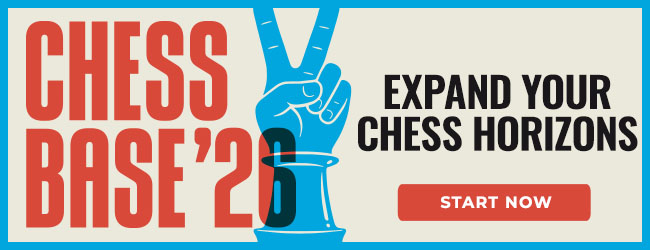Assessing Game Balance with AlphaZero
The following is excerpts from a 97-page scientific treaties submitted by Nenad Tomašev (DeepMind), Ulrich Paquet (DeepMind), Demis Hassabis (DeepMind) and Vladimir Kramnik (World Chess Champion 2000–2007). We will be describing the contents in multiple parts, providing you with example games for your own evaluation. Here for your reference is the previous article.
AlphaZero is a reinforcement learning system that can learn near-optimal strategies for any rule set from scratch without any human supervision, and provides an in silico alternative for game balance assessment. In their paper the team demonstrate the potential of AlphaZero to be used as a tool for creative exploration and design of new chess variants. Given the increasing depth of known chess opening theory, the high percentage of draws in professional play, and the non-negligible number of games that end while both players are still in their home preparation, there has recently been an increasing interest in chess variants, such as Fischer Random Chess.
In their study, the team has used AlphaZero to explore nine chess variants that involve atomic changes to the rules of chess, keeping the game close to the original, while allowing for novel strategic and tactical patterns. By effectively simulating decades of human play in a matter of hours, they are able to answer what the games between strong human players would potentially look like, if these variants were to be adopted. In this process, they identified several variants of chess that appear to be very dynamic and interesting. The findings demonstrate the rich possibilities that lie beyond the modern chess rules.
Here are the nine variants that were evaluated:
| Variant |
Primary rule change |
Secondary rule change |
| No-castling |
Castling is disallowed throughout the game |
-- |
| No-castling (10) |
Castling is disallowed for the first 10 moves (20 plies) |
-- |
| Pawn one square |
Pawns can only move by one square |
-- |
| Stalemate=win |
Forcing stalemate is a win rather than a draw |
-- |
| Torpedo |
Pawns can move by 1 or 2 squares
anywhere on the board. En passant can happen anywhere on the board. |
-- |
| Semi-torpedo |
Pawns can move by two square both from the 2nd and the 3rd rank |
-- |
| Pawn-back |
Pawns can move backwards by one square, but only back to the 2nd/7th rank for White/Black |
Pawn moves do not count towards the 50 move rule |
| Pawn-sideways |
Pawns can also move laterally by one square. Captures are unchanged, diagonally upwards |
Sideway pawn moves do not count towards the 50 move rule |
| Self-capture |
It is possible to capture one’s own pieces |
-- |
Qualitative assessment
To evaluate the differences in play between the set of chess variations considered in this study, the AlphaZero team coupled the quantitative assessment of the variations with expert analysis based on a large set of representative games. While the overall decisiveness and opening diversity add to the appeal of any chess variation, the subjective questions of aesthetic value and the types of positions, moves and patterns that arise are not possible to fully capture quantitatively. For providing a deep qualitative assessment of the appeal of these chess variations, the team relied on the experience of chess grandmaster Vladimir Kramnik, a recognised authority on the game.
For this analysis, they used 1,000 one-minute per move games as well as 200 one-minute per move games from a diverse set of early opening positions that covered all of the major opening systems. By looking at the former, experts were able to assess AlphaZero’s preferred style of play in each chess variant, and by looking at the latter, they could assess how the treatment of different opening lines changes and which of those become more or less promising under each of the rule changes.
Here are two illustrative positions for the chess variants No-castling and No-castling (10):

No-castling chess: This is a typical position where both kings haven’t found immediate safety and remain exposed into the middlegame.
No-castling(10) chess: The play tends to be slower and more strategic, to allow for later castling. Here, on the 11th move, Black castles at the very first opportunity and White castles immediately after as well.
You can read more about No Castling Chess in the article Vladimir Kramnik proposes an exciting chess variant! In fact we organised a full tournament with OTB play, under the supervision of Vladimir Kramnik himself. The result: a dramatic reduction of the number of undecided games: First ever "no-castling" tournament results in 89% decisive games!
Here is the qualitative analysis provided by GM Vladimir Kramnik.
No-castling chess is a potentially exciting variant, given that king safety is often compromised for both players, allowing for simultaneous attacking and counter-attacking and the equality, when reached, tends to be dynamic in nature rather than “dry”. The multitude of approaches to evacuate the king, and their timing, adds complexity to the opening play. No-castling (10), where castling is not permitted for the first 10 moves (20 plies) is a partial restriction, rather than an absolute one – which does not change the game to the same extent. Due to castling being such a powerful option, the lines preferred by AlphaZero all tend to involve castling, only delayed – resulting in a preference for slower, closed positions, and a less attractive style of play. Such partial castling restrictions can be considered if the desire is to sidestep opening theory and preparation, but this may not be of interest for the wider chess audience.
And here the assessment of two further variants:
Pawn one square may appeal to players who enjoy slower, strategic play – as well as a training tool for understanding pawn structures, due to the transpositional possibilities when setting up the pawns. The reduced pawn mobility makes it harder to launch fast attacks, making the game overall less decisive.
Stalemate=win has little effect on the opening and middlegame play, mostly affecting the evaluation of certain endgames. As such, it does not increase decisiveness of the game by much, as it seems to almost always be possible to defend without relying on stalemate as a drawing resource. Therefore, this chess variant is not likely to be useful for sidestepping known theory or for making the game substantially more decisive at the high level. The overall effect of the change seems to be minor.

The first position would have been a draw in classical chess is now a win instead. K+N+N vs K are now wins rather than draws! In the second position, with White to move, in classical chess the position would be a draw due to stalemate after Ke6. Yet, the same move wins in this variation of chess, so the defending side needs to steer away from these types of endgames.
Vladimir Kramnik's assessment of Stalemate=win
I was at first somewhat surprised that the decisive game percentage in this variation was roughly equal to that of classical chess, with similar levels of performance for White and Black. I was personally expecting the change to lead to more decisive games and a higher winning percentage for White. It seems that the openings and the middlegame remain very similar to regular chess, with very few exceptions, but that there is a significant difference in endgame play since some basic endgame like K+P vs K are already winning instead of being drawn depending on the position.
In terms of the anticipated effect on human play, I would still expect this rule change to lead to a higher percentage of wins in endgames where one side has a clear advantage, but probably not as much as one would otherwise have been expecting. This may be a nice variation of chess for chess enthusiasts with an interest in endgame patterns.
Replay a sample of variant games here:
If you find the results puzzling you should remember that most of the high-quality games of AlphaZero end up as draws – with a few decisive games in between. This is because the level of play is so high that it become seriously difficult for one side to defeat an opponent of equal strength. In games with faster time controls (1s/move) the play is usually more aggressive and decisive – but obviously less accurate as well.
You can read the entire 98-page paper here:
Assessing Game Balance with AlphaZero: Exploring Alternative Rule Sets in Chess
Submitted on 9 Sep 2020 (v1), last revised 15 Sep 2020 (this version, v2)
By Nenad Tomašev, Ulrich Paquet, Demis Hassabis, Vladimir Kramnik
Abstract: It is non-trivial to design engaging and balanced sets of game rules. Modern chess has evolved over centuries, but without a similar recourse to history, the consequences of rule changes to game dynamics are difficult to predict. AlphaZero provides an alternative in silico means of game balance assessment. It is a system that can learn near-optimal strategies for any rule set from scratch, without any human supervision, by continually learning from its own experience. In this study we use AlphaZero to creatively explore and design new chess variants. There is growing interest in chess variants like Fischer Random Chess, because of classical chess's voluminous opening theory, the high percentage of draws in professional play, and the non-negligible number of games that end while both players are still in their home preparation. We compare nine other variants that involve atomic changes to the rules of chess. The changes allow for novel strategic and tactical patterns to emerge, while keeping the games close to the original. By learning near-optimal strategies for each variant with AlphaZero, we determine what games between strong human players might look like if these variants were adopted. Qualitatively, several variants are very dynamic. An analytic comparison show that pieces are valued differently between variants, and that some variants are more decisive than classical chess. Our findings demonstrate the rich possibilities that lie beyond the rules of modern chess.
























